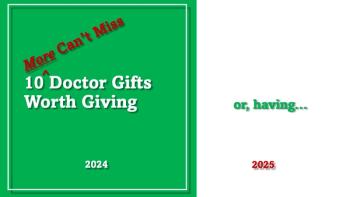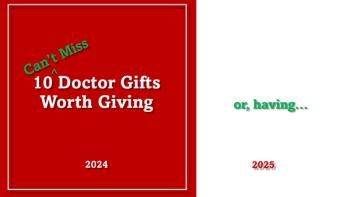
Hurtigruten's Finale: Bergen
On the last stop of their Norwegian cruise, the Andersons explore Bergen: a city both visitors and residents can't help but brag about.
We sail into Bergen. We are 2,543 kilometers (about 1,580 miles), from Kirkenes to the north where our
It is raining. That the streets are wet is no surprise — this former capital of
“That’s not quite fair,” says Linn Kjos Falkenberg, the information and marketing coordinator of the Bergen Tourist Board in the faultless English so many speak in this accommodating country. “If it rains more than 0.1 mm in one day, it’s counted as a rainy day. In other words, it doesn’t take a lot of rain to get into the statistics.”
Nevertheless, Bergen can claim to be the site of the word’s first umbrella vending machine. So here’s our guide, Sue. Her English is perfect, also, but since she hails from the Lake District in England we’d expect that. She has an umbrella, but we’d expect that, too, from someone who has lived in England.
“
We walk through the old part of
Bryggen fascinates visitors even in a city that has 20 churches, five monasteries, two hospitals for the poor, a cathedral and the “Leprosy Hospital,” where Gerhard Armauer Hansen discovered the organism that causes the disease now bearing his name.
Bergen was founded in 1070 and was the largest city in Norway until 1830 when it was displaced by Oslo. Its population is now 260,000 compared to Oslo’s 600,000 in a country the size of California with a population of 5 million.
Bergen is easy to love. It’s more walkable than Oslo and appears more laid back. It seems the ideal place to live and knows it, too. There’s a story of a child who moved to Oslo and was introduced to his class when he changed schools. A few days later his teacher said, “Harald, why didn’t you tell us you came from Bergen?” He replied, “I didn’t want the class to think I was bragging!”
It’s hard even for visitors not to brag about Bergen. You walk along its marvelous waterfront, pass a tied-down frigate, look at the sailor who seems to be the sentry, hold up your camera and hesitate: Most countries have rules about photographing military institutions.
The sailor indicates, Wait! He goes off to get a friend in the picture, too. And how often do tourists get a smile when they impose on workers’ goodwill in farmers’ markets? In Bergen’s Fish Market the second most popular attraction — after historical Bryggen — the smile and posing comes easy.
The third most popular attraction is the funicular to Mt. Floyen, one of the seven mountains that overlook the city. We went up our first morning in Bergen. It was a lovely sunny day after the rain and everywhere locals were sitting on the curb of streets, their faces tilted to the sun.
“This is the second time in two months we’ve seen the sun!” says one elderly woman undoing the buttons on her blouse and leaning back in the warmth of the day.
One thousand and fifty feet high on top of Mt. Floyen, residents are also enjoying their break from a miserable March. Our hotel, the
Coming down on the funicular is fun. Kids and photographers compete to get the best view. It’s a quick walk back to downtown and the
Holberg was a writer, a satirist, a playwright and a historian who wrote widely on law, theology, travel and even science. One of his most extreme writings that might make modern bacteriologists’ blood tingle is his treatise
Betænkning over den nu regierende Qvæg-Syge
suggesting that some forms of cattle disease might be due to microorganisms — and he wrote this in 1745!
A lot of history hangs around the harbor. It lies there amongst the tombstones as the snowdrops break through with their promise of spring. It shows up as an unexpected exhibit of city seals in the Hanseatic Museum.
The red seal at the top of the photograph is the 1267 seal of Dublin and the yellow-orange one is of Paris in the year 1412. Those curious about any past political connection between those two cities find explanations at the museum. The connection was commercial through the
The Hanseatic Museum doesn’t offer much although hanging on its wall is the useful map of its territory shown in our last photograph. The museum is mostly a restoration of assembly rooms for the merchants, but the
Statsraad Lehmkuhl.
Despite the presence of 44 attractions and museums, the best way to understand Bergen’s beginnings is to wander its streets. There’s a lot to see. The 1914 three-masted barque tied down at the harbor is the German training ship After World War I it was sold to Norway by the British government, taken back by Germany during World War II and then returned to Norway after the war. Ironically, in 2000 it was rented by the German Navy to replace one of their school training ships that was being re-serviced. This is a busy harbor. Last year 260 cruise ships tied down at Bergen
Photography by the authors It’s easy to spend your time here. Find a bakery that offers Bergen’s famous cinnamon rolls. Note the archaic door handles. Enjoy the waterfront. Catch the insider jokes. Example: How convenient for guests at the Amore Restaurant to have Dr. Livingstone next door!. Especially if they have a thirst not a stomach complaint. Dr. Livingstone’s is a bar!
If you search farther for a drink — there’s a bar that was once the former house of
The classic medical story in Bergen is our next story. It concerns the dedication of one Gerhard Armauer Hansen to find the cause of leprosy; a search that defied all conventional thinking about the origin of the disease.
The Andersons, who live in San Diego, are the resident travel & cruise columnists for Physician's Money Digest. Nancy is a former nursing educator, Eric a retired MD. The one-time president of the NH Academy of Family Practice, Eric is the only physician in the Society of American Travel Writers. He has also written five books, the last called
Newsletter
Stay informed and empowered with Medical Economics enewsletter, delivering expert insights, financial strategies, practice management tips and technology trends — tailored for today’s physicians.








